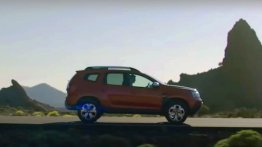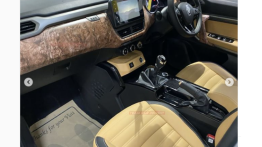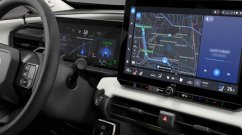Renault commenced its Indian innings in a partnership with Mahindra. The joint-venture was responsible for the retail of Logan. After parting ways with the homegrown carmaker, the company had a comeback of sorts with premium models like the Koleos and Fluence. Anyway, history lessons apart, all the drama, struggle, and the dud-sellers were followed by a breath of fresh air in the form of the Duster in 2012. Following the first minor change in 2015, the company has rolled out another cosmetic update for the compact SUV. While international markets enjoy the second-gen model, India is basically getting a yet-again-facelifted first-gen model. Is it new enough? We decided to find out in this Renault Duster Petrol CVT review.
Renault Duster Petrol Automatic (CVT) Review | Mileage Tested | Hindi
Exterior
It was back at the turn of the decade that I first saw the pictures of the first-gen Duster, albeit, with the Dacia insignias. Back in the day, I found it to be quite a looker with decent proportions and beefed-up expanses of the sheet metal. The Duster has aged pretty well, but that said, the latest model has brought in some more bling and boldness.
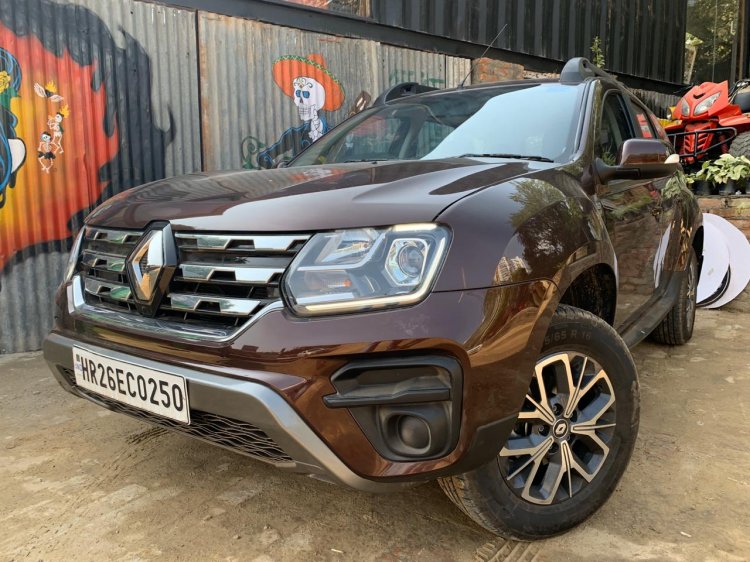
Starting from the front, the Duster now gets a redesigned nose that complies with the latest pedestrian safety norms. The new bumper holds a revised faux scuff plate and bigger fog lamp housings. The redesigned bumper and the scuff plates help the Duster feel fresh but have reduced the approach angle by a very slight margin. However, the biggest change is the new grille, DRLs and the new bonnet. The grille is now bigger, looks better and holds a lot more character into it. The bonnet now gets new creases to muscle out the front look and is also set a bit higher than the one seen on the pre-facelift model. The headlamps get projector setup now and L-shaped DRLs.
Also read:Tata Nexon EV Review - Test Drive Review [Video]
Moving to the sides, the first thought that came to my mind is it has the exact same profile that made me waiting for the car when I saw it for the first time in 2010. Yes, this means the car now looks dated, and the only change it has in comparison to the previous model is the new design for the alloy wheels. Although, I really wish Renault should’ve changed the lift-type door handles to something modern and in line with the current date and time. The top-end RXZ trim gets a chrome strip running below the window line, which looks like an aftermarket add-on. Thankfully, it wasn’t there on our RXS(O)-spec test car.
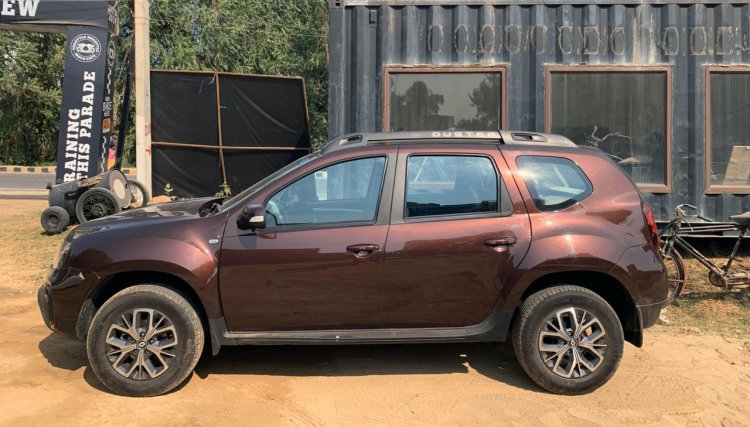
The posterior has, again, remained largely untouched. The rear-end looks similar to the pre-facelift model. The only changes we get to see here are the new scuff plates and the tailgate illuminating panel. The scuff plates are now finished in a dark-silver tone, which is not something to feel good about, as scuff plates are there to serve a purpose. What purpose? They take up scuffs and scratches as they are the very first point of contact at front and rear ends. And painted scuff plates only invites an extra cost to the ownership experience. The plastic panel above the registration plate bearing the Duster logo is now finished in black, and not just any black, matte black. Instead, the scuff plates should’ve been done that way. However, the top-end RXZ variant gets rubber claddings on the tailgate to connect the taillights and the registration plate illumination housing, which the RXS(O) variant we tested didn’t have.
Also read: Tata Harrier - First Drive Review [Video]
Interior
On the inside, the Duster has started to show its age. That said, Renault deserves some appreciation for revamping the dashboard design to its best possible form. The dashboard gets a piano black treatment around the centre console, and the central AC vents have been transformed to adopt a rectangular design.
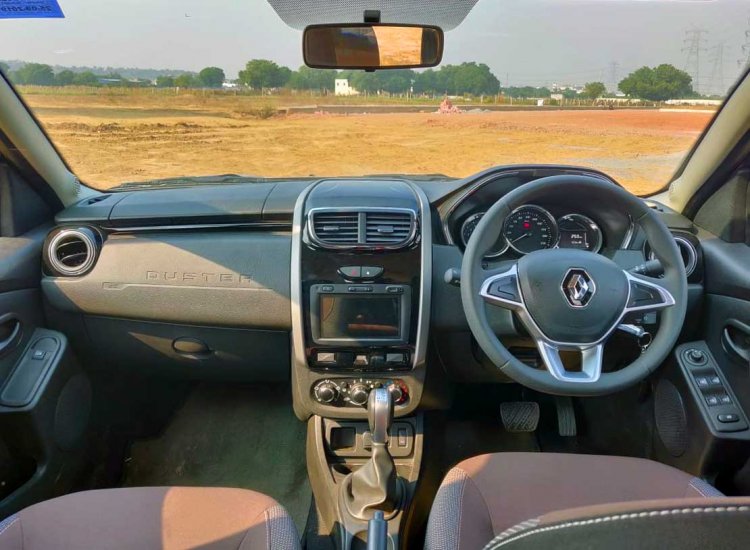
From the driver’s perspective, the most evident change is the new steering wheel. It is now softer to touch, better contoured, and also looks better in comparison to the older unit. The analogue instrumentation isn't as fancy as the all-digital unit of the Triber. On the passenger side, the dashboard now gets 2 gloveboxes, one on the top of it, which is cooled, while the other one sits lower down. Even the 'DUSTER' lettering engraved on the panel is a new detail.
Also read: Tata Altroz - First Drive Review [Video]
With the facelift, the Duster has gained a few more features, such as remote keyless entry, cooled glovebox, automatic climate control, hill-start assist, front centre armrest, 7-inch touchscreen infotainment system with AndroidAuto and Apple Carplay. The touchscreen unit is from the Kwid, and that comes up as one cost-cutting move. The four speakers and two tweeters sound really good. When using the USB port for Android Auto or Apple Carplay, the connection cable obstructs the view of the screen.
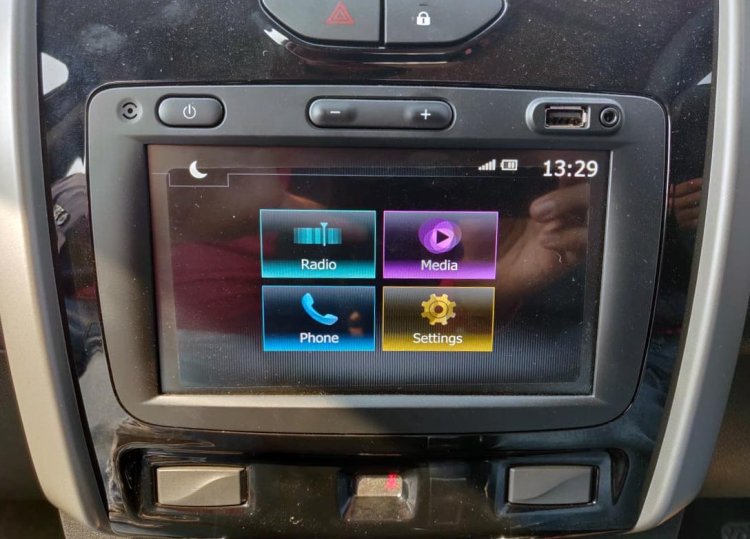
Talking of space, the Duster has a lot of it. The first row is spacious, but the centre tunnel protrudes into the footwell, which is a little annoying. The second row is generous, and seating 3 abreast is quite comfortable. With 475 litres of boot space, the trunk isn’t shallow by any measures. The loading lip is a little high, but the flat floor makes the job easier.
Performance
Renault Duster can be bought either with a 1.5L petrol engine or a 1.5L diesel unit. The 1.5L petrol unit produces 106 PS of peak power and 140 Nm of peak torque. It can be had with a 5-speed MT or a 6-step CVT (our test car had a CVT). The diesel engine, on the other hand, can be had in 2 different states of tune - 85 PS and 110 PS. The transmission options for the diesel engine include a 5-speed manual unit for the 85 PS diesel version and 6-speed manual and 6-speed automated manual for the 110 PS version. An AWD system is optional.

The Duster comes suspended on McPherson struts with coil-overs at the front and a trailing arm with coil spring at the rear. The suspension design on the Duster isn’t something exotic, but the ride and handling of the car are well balanced. The car reverts with ease to hardest of the input and goes over bumps. In fact, the Duster has been among the most confident handlers in its segment and still manages to soak potholes with just a light thud.
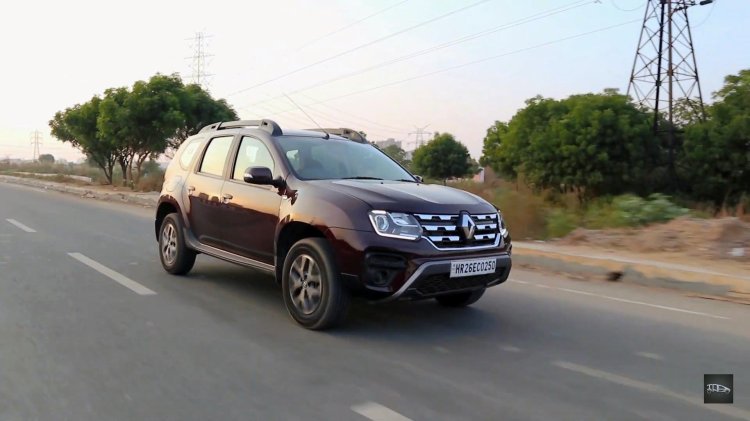
The petrol motor is powerful enough to let the SUV cruise at triple-digit speeds with ease, but the roll-on acceleration isn’t all that exciting. The 5-speed manual unit we drove earlier was a trouble-free option but the convenience of CVT was absent there. The 6-step CVT here can be said to be one of the best units available in the segment but that doesn't do away with the inherent rubber band-effect of this transmission type. A good thing is that the Duster's unit comes with an option to take over the control manually, which is something that should satisfy those with a heavy foot. One big gripe we had with the CVT, however, is that it isn’t a fuel-efficient unit. The lowest fuel-efficiency figures received were 9 km/l and to the higher side, it was just a bit more than 10 km/l. So, for clocking miles, the diesel version should be the choice. But, since our test unit came plonked with a petrol engine and CVT under the hood, we would refrain ourselves from commenting on that.
Also read: Renault Duster BS6 launched, prices start at INR 8.49 lakh
Renault Duster Petrol CVT review - Verdict
Renault has tried its best to give the Duster a fresh appeal with the latest facelift. Sadly, however, the latest efforts are quite insufficient to hide the age of this vehicle. While the Duster continues to impress with its well-sorted dynamics and sufficiently punchy motors, it feels dated when it comes to looks and features.

However, the aggressive pricing plays a keen role in making the Duster a fairly decent option for those on a strict budget. Available at an ex-showroom price of Rs 9.99 lakh, the Renault Duster RXS(O) CVT is more than Rs 3.75 lakh cheaper than the most affordable petrol-automatic variant of the Hyundai Creta, which costs Rs 13.77 lakh (ex-showroom). It also makes this SUV a versatile choice in the pool of similarily priced sub-4m compact SUVs.
Stay updated on Indianautosblog for more Renault Duster news and car review
















